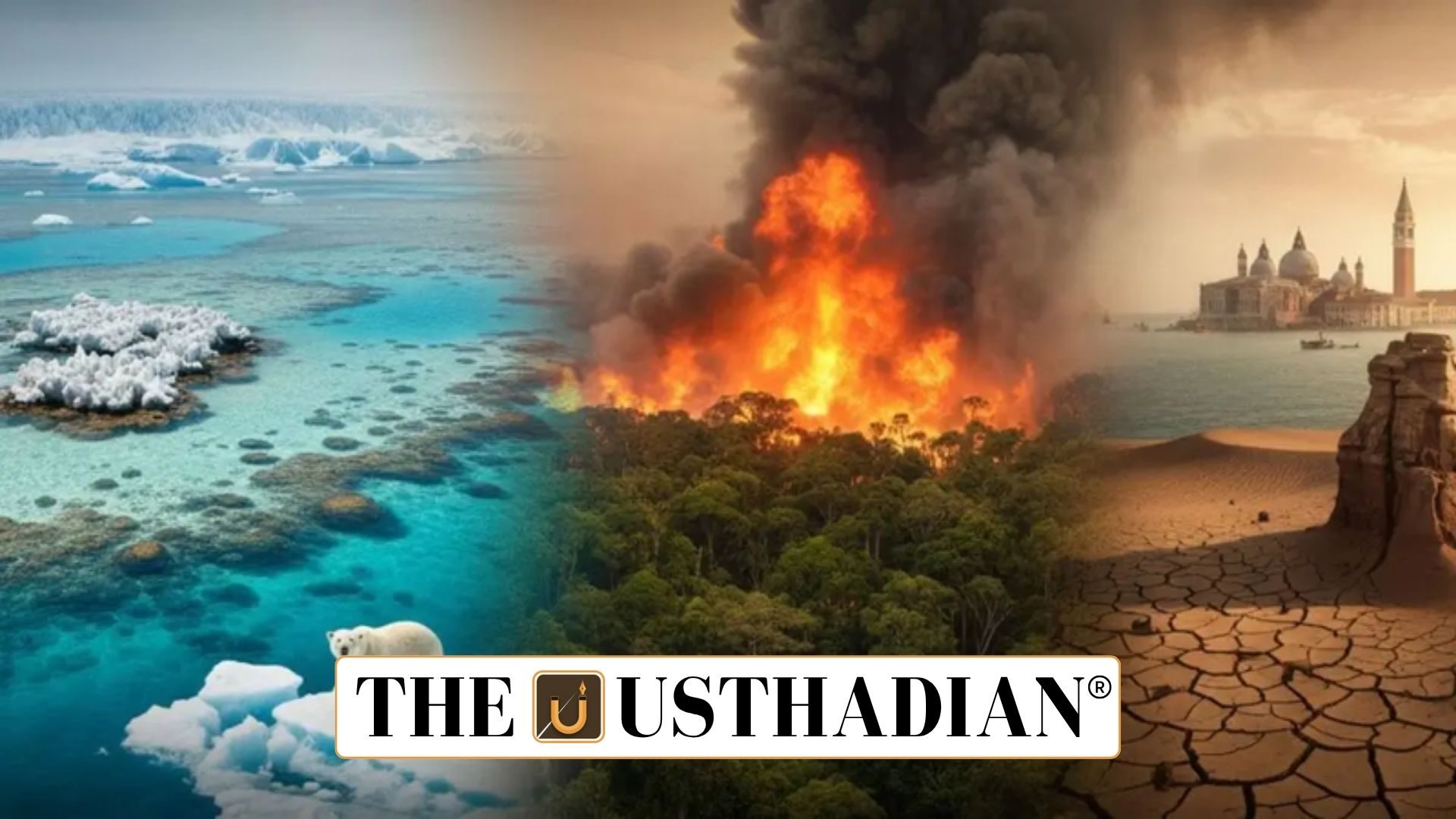IUCN Outlook 2025 Highlights
Climate Change Emerging as Greatest Threat to Natural Heritage Sites: The IUCN World Heritage Outlook 4, released in October 2025 at the IUCN Congress in Abu Dhabi, identifies climate change as the leading threat to the world’s natural and mixed World Heritage sites. Covering 257 sites, the report reveals that 43% now face high or very high climate-related risks, surpassing threats from invasive species and habitat degradation.
Static GK fact: The International Union for Conservation of Nature (IUCN), founded in 1948, is the world’s oldest and largest global environmental organization.
Worsening Global Ecological Outlook
According to the Outlook 4 report, the conservation outlook of many heritage sites continues to decline. Sites rated as having a “good” or “improving” status dropped from 62% in 2020 to 57% in 2025. The IUCN Outlook series, initiated in 2014, assesses natural sites based on their biodiversity health, management effectiveness, and pressures from human and natural factors.
Static GK Tip: The UNESCO World Heritage Convention (1972) provides international protection for sites of outstanding natural and cultural value.
Climate Change as the Primary Threat
Climate change impacts are now visible across all ecosystems. Rising sea levels threaten coastal and deltaic sites such as the Sundarbans, while glacial retreat endangers high-altitude regions in the Himalayas and Andes. Increasing wildfires, temperature surges, and water scarcity have weakened fragile ecosystems in Australia, Africa, and the Mediterranean Basin.
These changes disrupt ecological balance, harm local livelihoods, and diminish the resilience of native species.
Static GK fact: The Sundarbans, shared by India and Bangladesh, is the world’s largest mangrove forest and a UNESCO World Heritage Site since 1987.
Invasive Species and Disease Threats
Although climate change dominates, invasive alien species still affect 30% of all natural heritage sites. These species disrupt food chains and degrade habitats by competing with or preying on endemic flora and fauna. Additionally, disease outbreaks among wildlife and plants have risen sharply — from 2% in 2020 to 9% in 2025 — a trend linked to climate stress and global trade movements.
Static GK fact: Invasive species are the second-largest cause of biodiversity loss worldwide, after habitat destruction.
Decline in Global Conservation Outlook
The decline is most severe in tropical forests and coral reef systems, where rising temperatures and human activities compound stress. Sites such as the Great Barrier Reef (Australia), Tropical Rainforests of Sumatra (Indonesia), and Everglades National Park (USA) have shown deteriorating conservation status due to multiple environmental pressures.
Call for Global Action
The report emphasizes that protecting World Heritage is not only about scenic beauty but also about safeguarding biodiversity, culture, and human identity. The IUCN urges:
- Increased funding for climate adaptation and mitigation
- Improved site-level governance and monitoring systems.
- Greater inclusion of Indigenous Peoples in conservation leadership.
- Integration of climate and biodiversity goals within the UNESCO and UNFCCC
Static GK Tip: The UNFCCC (United Nations Framework Convention on Climate Change) was adopted in 1992 to stabilize greenhouse gas concentrations in the atmosphere.
Static Usthadian Current Affairs Table
Climate Change Emerging as Greatest Threat to Natural Heritage Sites:
| Topic | Detail |
| Report Name | IUCN World Heritage Outlook 4 |
| Released | October 2025 |
| Event | IUCN Congress, Abu Dhabi |
| Publisher | International Union for Conservation of Nature (IUCN) |
| Sites Reviewed | 257 natural and mixed sites |
| Major Threat | Climate change (affecting 43% of sites) |
| Secondary Threat | Invasive alien species (30% of sites) |
| Rising Disease Impact | Increased from 2% (2020) to 9% (2025) |
| Sites with Positive Outlook | Dropped from 62% (2020) to 57% (2025) |
| Example Sites | Great Barrier Reef, Sundarbans, Everglades National Park |








